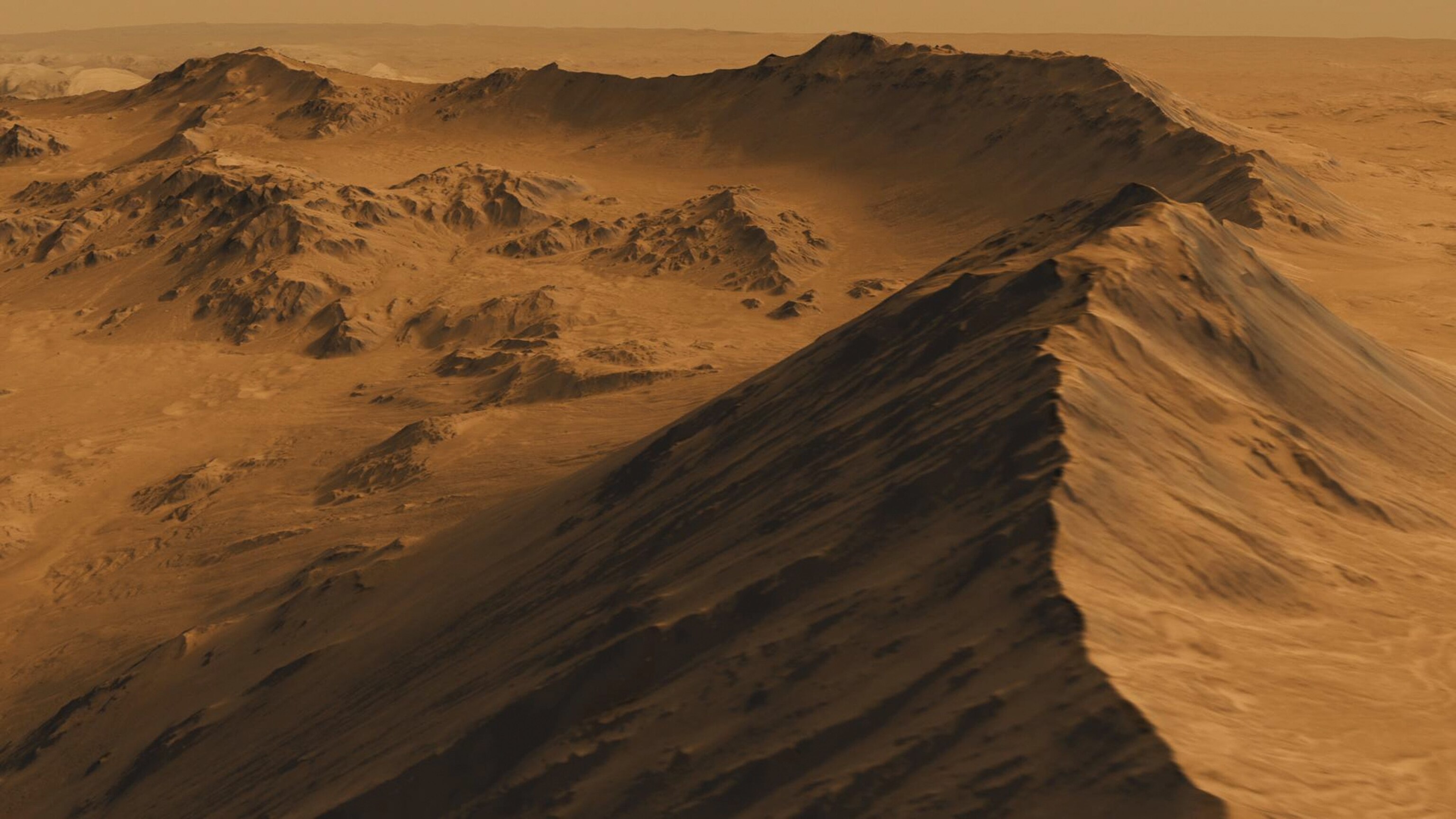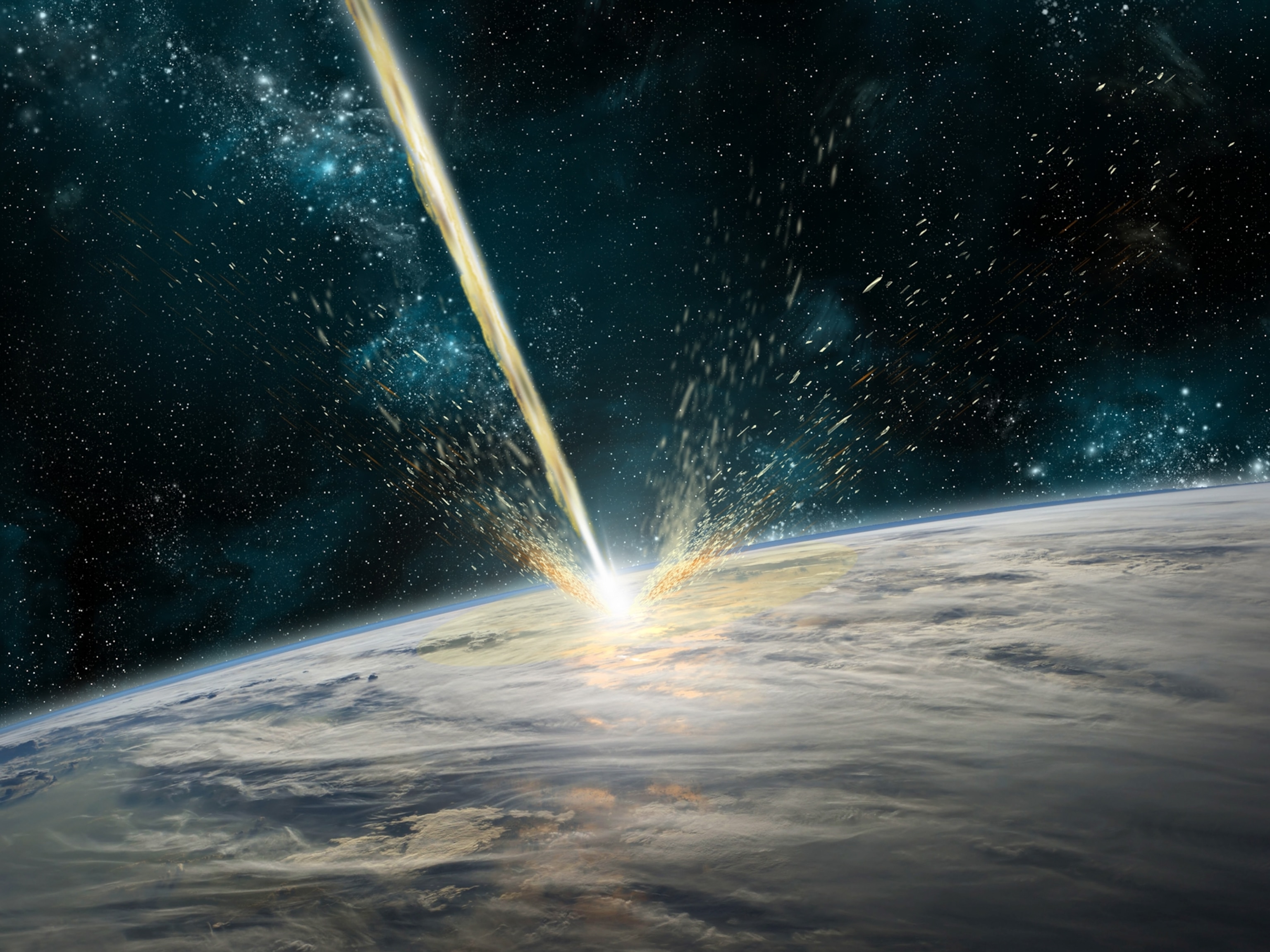
Meteorites on Earth May Be From Ancient Crater on Mars, Study Says
Findings have implications for the early evolution of Mars, including its formation and cooling.
A crater on Mars appears to be the source of a type of meteorite widely found on Earth, scientists from the University of Oslo in Norway reported Thursday.
The meteorites, called shergottites, may have come from the 34-mile-wide (55-kilometer-wide) Mojave Crater. The results, if confirmed, would have implications for ancient volcanism on Mars—suggesting it stopped earlier in the planet's history than some scientists believe—as well as the planet's formation.
Martian meteorites fall to Earth after an asteroid impact blasts them off their home planet. Most of the 150 Martian meteorites found on Earth belong to one of three groups: shergottites, nakhlites, and chassignites (known as SNC meteorites). The latter two types are thought to have formed around 1.3 billion years ago, but controversy surrounds the origin of shergottites.
The study, published in Science Express, suggests that formation of the meteorites can be traced to the Mojave Crater, located in an ancient region of Mars called the Xanthe Terra. "There has been no other impact crater identified from which any of the Martian meteorites come from," says the study's lead author Stephanie Werner.
"This research is very important for helping us interpret the geochemical data of Mars," says Audrey Bouvier, an isotopic geochemist at Western University in Ontario, Canada, who was not involved in the study. "It has implications for the early evolution of the planet, including its formation, cooling, and the loss of its [global] magnetic field."

All in the Family
To see if the meteorites came from the Mojave Crater, Werner and her colleagues compared the mineral composition of the crater—determined using Mars satellite scans—with those of three shergottites and ALH84001, a Mars meteorite not part of the SNC family. They found that the mineralogy of the crater wall outcrops matched the composition of the meteorites.
Next, the team sought to determine the Mojave Crater's age, which can be estimated based on the number of craters in the area and their sizes. They developed a Martian and lunar cratering chronology model, and calibrated it using dated samples from the Apollo moon missions. Their model suggested the crater formed about three million years ago.
"This age fits very well with the cosmic-ray exposure ages for shergottites," Werner says, referring to the amount of time the meteorites were exposed to cosmic rays as they traveled from Mars to Earth. Scientists have previously determined that shergottites have cosmic-ray exposure ages of one to five million years.
The researchers' model also determined that the Xanthe Terra landscape is about 4.3 billion years old (200 million years older than previous estimates). Though studies measuring radioactive lead in shergottites have concluded that the meteorites are 4.1 to 4.3 billion years old, research looking at most other isotopes has yielded ages of only 150 to 600 million years old.
To explain this discrepancy, Werner and her team suggest that the asteroid impact that created the Mojave Crater and ejected the meteorites into space produced very high pressures, altering some of the rock's minerals and resetting their ages.
Considerable Debate
"It's great to see an independent study that has confirmed the old ages of what I've found," says Bouvier, who has conducted lead-lead isotope analyses of shergottite meteorites and others. "I am amazed that they found the same groups of ages as what I found in shergottites."
Not everyone agrees.
"There is considerable debate about the igneous crystallization ages of shergottites," says Thomas Lapen, an isotope geochemist at the University of Houston in Texas, who has previously dated ALH84001 to 4.1 billion years old. "The authors did not make a convincing case to me that the young igneous crystallization ages of shergottites are invalid."
"The paper is controversial, quite frankly," says meteorite expert Carl Agee of the University of New Mexico, adding that such an old age for shergottites is a minority view.
Although researchers suggest that the ALH84001 meteorite was ejected from the Mojave Crater along with the shergottites, ALH84001 has a cosmic-ray exposure age at least ten million years greater. "Most people don't see a relationship between ALH84001 and the shergottites," Agee says.
Agee is also skeptical that the meteorites and the crater share the same mineral composition. "[The data are] not particularly compelling, and I don't think that most experts would buy into this," he says.
Data from an orbiting satellite isn't precise, given the distance. To really see a match between the crater and meteorites, you'd need data from a Mars rover. A proposed Mars Sample Return mission might settle the debate, but its launch isn't expected for more than a decade.





